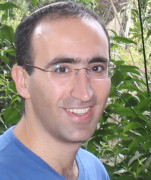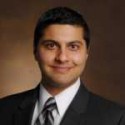Author Interviews, Hip Fractures, Kidney Stones, Menopause, Osteoporosis / 22.07.2015
No Association Between Kidney Stones and Osteoporosis or Fractures in Women
 MedicalResearch.com Interview with:
Monique Bethel, MD
Subspecialty Service, Department of Veterans Affairs Medical Center,
Department of Medicine, Section of Rheumatology
Georgia Regents University
Augusta, GA
MedicalResearch: What is the background for this study?
Dr. Bethel: Osteoporosis and kidney stones share several risk factors, including elevated calcium in the urine (hypercalciuria), low potassium intake, and possibly, diets high in sodium. Accordingly, several studies have shown a significant relationship between kidney stones and osteoporosis in men. However, it is unclear if this relationship is also true for women. Previous studies examining this association have been small and inconclusive. With the Women’s Health Initiative, we had data available from approximately 150,000 postmenopausal women in the US. Using this database, we were able to study the relationship between kidney stones and changes in bone mineral density and fractures.
MedicalResearch: What are the main findings?
Dr. Bethel: We found no association between the presence of kidney stones and changes in bone mineral density over time at the hip, lumbar spine, or the whole body. Also, there was no association between the presence of kidney stones and fractures. We also found that 14% of women who had a history of kidney stones upon entering the studies had another one occur during the course of the study (approximately 8 years).
(more…)
MedicalResearch.com Interview with:
Monique Bethel, MD
Subspecialty Service, Department of Veterans Affairs Medical Center,
Department of Medicine, Section of Rheumatology
Georgia Regents University
Augusta, GA
MedicalResearch: What is the background for this study?
Dr. Bethel: Osteoporosis and kidney stones share several risk factors, including elevated calcium in the urine (hypercalciuria), low potassium intake, and possibly, diets high in sodium. Accordingly, several studies have shown a significant relationship between kidney stones and osteoporosis in men. However, it is unclear if this relationship is also true for women. Previous studies examining this association have been small and inconclusive. With the Women’s Health Initiative, we had data available from approximately 150,000 postmenopausal women in the US. Using this database, we were able to study the relationship between kidney stones and changes in bone mineral density and fractures.
MedicalResearch: What are the main findings?
Dr. Bethel: We found no association between the presence of kidney stones and changes in bone mineral density over time at the hip, lumbar spine, or the whole body. Also, there was no association between the presence of kidney stones and fractures. We also found that 14% of women who had a history of kidney stones upon entering the studies had another one occur during the course of the study (approximately 8 years).
(more…)





















